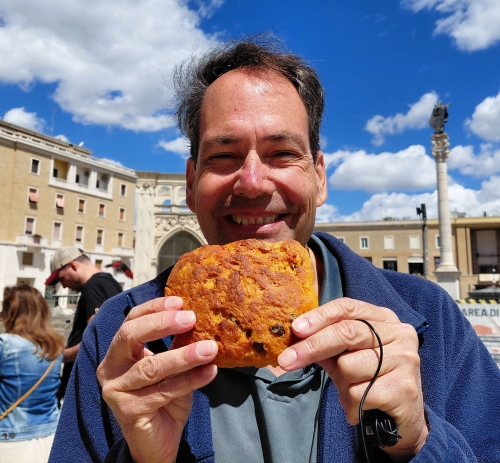Called “The Florence of South” for its fanciful Baroque architecture, Lecce also boasts amazing wine and rustic cuisine.
Foodie Lecce
Puglia is known as the breadbasket of Italy because this is where so much of Italy’s durum wheat is grown. Olives and grapes are also hugely important crops. Here, the cuisine is more rustic than fancy, allowing the delicious ingredients of the region to shine.
La Piscialetta
One of my favorite things about Italy is that nothing is wasted. Have grape skins and stems left over from making wine? Distill it into grappa. Dug up some stones from building a cistern? Build a wall or a house.
And if you have scraps of dough left over from breadmaking, you bake them into La Piscialetta. La Piscialetta was originally a peasant food, scraped together by grandmothers who added leftover vegetables like sun dried tomatoes or grilled zucchini to the dough.

But, as Puglia was lifted out of poverty, the art of making La Piscialetta was almost lost. Luckily, baking La Piscialetta has been revived in recent years. There’s even an annual festival in August to celebrate to local treat. You can try several different kinds of La Piscialetta, but the festival is really more of an excuse to party and enjoy some raucous music.
My favorite place to get La Piscialetta is
